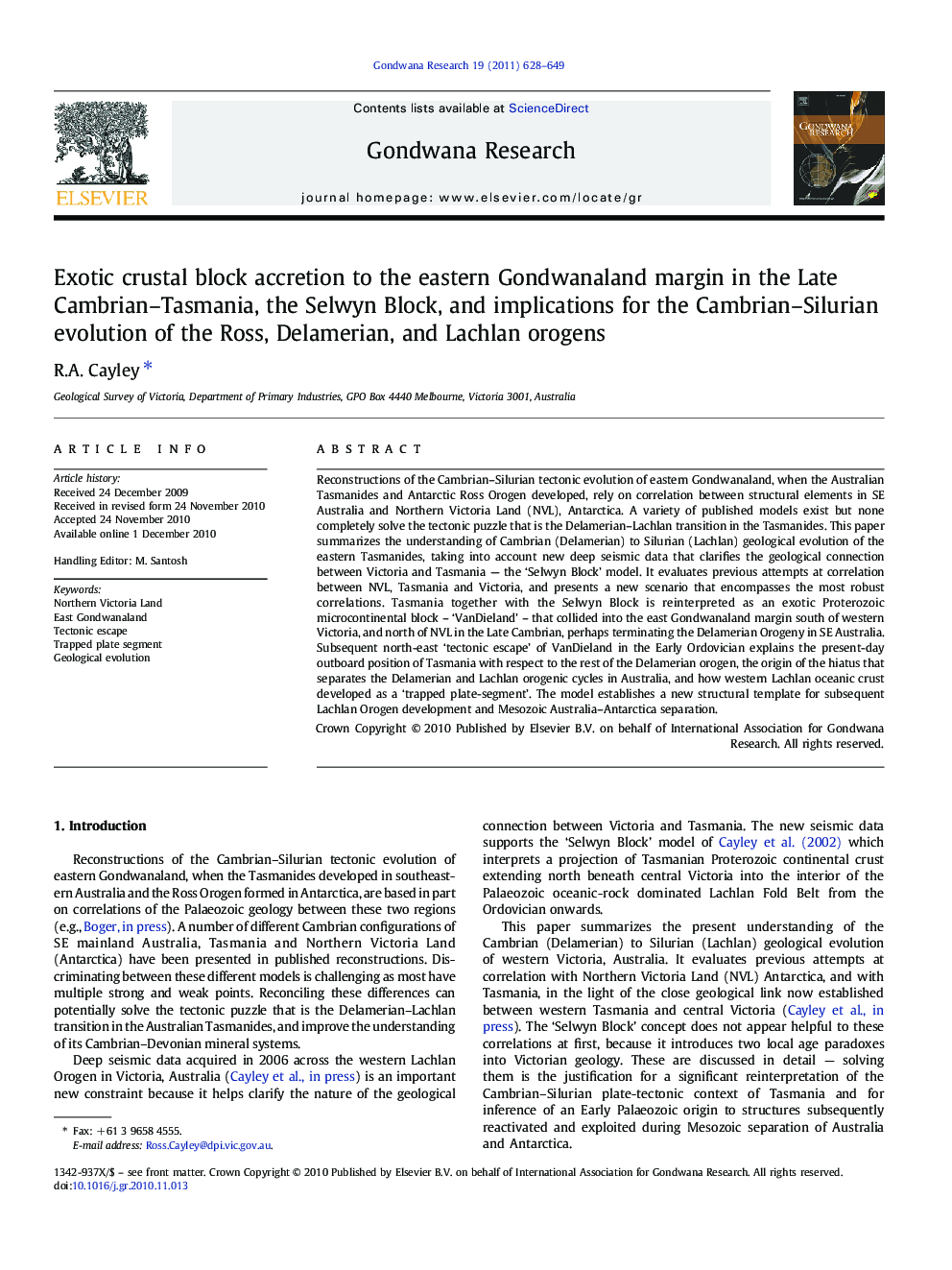| کد مقاله | کد نشریه | سال انتشار | مقاله انگلیسی | نسخه تمام متن |
|---|---|---|---|---|
| 4727206 | 1356365 | 2011 | 22 صفحه PDF | دانلود رایگان |

Reconstructions of the Cambrian–Silurian tectonic evolution of eastern Gondwanaland, when the Australian Tasmanides and Antarctic Ross Orogen developed, rely on correlation between structural elements in SE Australia and Northern Victoria Land (NVL), Antarctica. A variety of published models exist but none completely solve the tectonic puzzle that is the Delamerian–Lachlan transition in the Tasmanides. This paper summarizes the understanding of Cambrian (Delamerian) to Silurian (Lachlan) geological evolution of the eastern Tasmanides, taking into account new deep seismic data that clarifies the geological connection between Victoria and Tasmania — the ‘Selwyn Block’ model. It evaluates previous attempts at correlation between NVL, Tasmania and Victoria, and presents a new scenario that encompasses the most robust correlations. Tasmania together with the Selwyn Block is reinterpreted as an exotic Proterozoic microcontinental block – ‘VanDieland’ – that collided into the east Gondwanaland margin south of western Victoria, and north of NVL in the Late Cambrian, perhaps terminating the Delamerian Orogeny in SE Australia. Subsequent north-east ‘tectonic escape’ of VanDieland in the Early Ordovician explains the present-day outboard position of Tasmania with respect to the rest of the Delamerian orogen, the origin of the hiatus that separates the Delamerian and Lachlan orogenic cycles in Australia, and how western Lachlan oceanic crust developed as a ‘trapped plate-segment’. The model establishes a new structural template for subsequent Lachlan Orogen development and Mesozoic Australia–Antarctica separation.
Graphical AbstractFigure optionsDownload as PowerPoint slideResearch Highlights
► A new model for Cambrian–Silurian eastern Gondwanaland tectonic evolution.
► Tasmania and the Selwyn Block are parts of an accreted microcontinent—VanDieland.
► Accretion explains hiatus between Delamerian and Lachlan orogenic cycles in Australia.
► ‘VanDieland’ lateral escape caused proto-Lachlan ‘trapped plate segments’ to develop.
Journal: Gondwana Research - Volume 19, Issue 3, April 2011, Pages 628–649